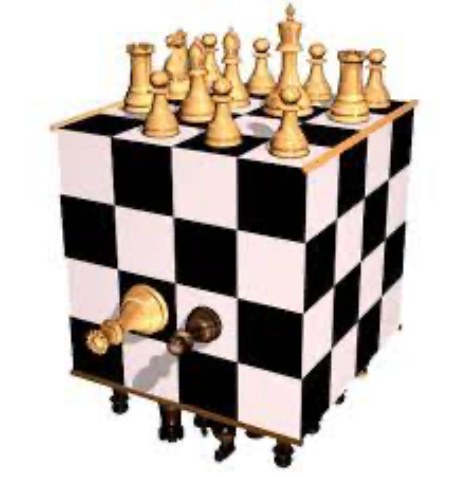Rubik' Cube Chess
There’s a version of chess that few people have ever thought about.
It’s not played on a flat 8×8 grid.
It’s played on a Rubik’s Cube.
And in this version, the board itself moves.
When the Board Becomes the Opponent
In normal chess, you master position.
The geometry is fixed. Every piece lives within a static frame of reference.
But in Rubik’s Cube Chess, every move has a meta-move.
You can rotate the cube itself — turning the faces, changing the board’s topology, rearranging reality.
You’re not just playing against another mind.
You’re playing against the structure of the game.
It’s like discovering that space itself can be traded.
The Queen — The Only Dimensional Player
Here’s the rule that changes everything:
only the Queen can move across the cube’s faces.
Everyone else — pawns, rooks, bishops, knights, kings — remains trapped on their local plane.
They fight within their side of the cube, bounded by two dimensions of space and one dimension of ignorance.
But the Queen?
She can move through seams, cut across faces, and even rotate the cube as part of her turn.
That makes her the only piece with dimensional access.
She doesn’t just play on the board — she plays with it.
In other words:
the Queen isn’t a participant.
She’s the operator.
Geometry Turns Into Time
When the cube rotates, the geometry of the game literally shifts.
What was once a strong defense becomes a misalignment.
What was once a weak pawn suddenly becomes an anchor in a new orientation.
The Queen alone anticipates this.
Everyone else experiences it as volatility.
That’s how markets work.
Most participants experience volatility.
The author of the market experiences structure.
To move the cube is to bend time — to rewrite causality while others still think they’re playing positionally.
The Two Types of Moves
In Rubik’s Cube Chess, you get a choice each turn:
Move a piece.
Rotate a layer.
But the Queen — and only the Queen — can do both.
That dual capacity changes everything.
She can reposition a threat and simultaneously redefine the map it exists within.
She is the embodiment of tempo itself — controlling both price (position) and time (rotation).
That’s what it means to author a system instead of just participating in it.
From Mastery to Authorship
Normal chess is a game of control.
Rubik’s Cube Chess is a game of authorship.
It’s not about remembering the openings.
It’s about deciding what an opening even means when the board can pivot mid-sequence.
Every rotation rewrites context.
Every move changes the meaning of every other move.
The Queen plays the only game that truly matters — the one where the rules bend around her timing.
The Market as a Cube
Markets behave the same way.
Most people play flat chess — fundamental analysts, quants, traders who still think in prediction and range.
But the market doesn’t move like that anymore.
The structure rotates.
Liquidity shifts.
Order flow re-routes.
The board itself is alive.
Those who can’t see the rotation drown in variance.
Those who can author the rotation — even slightly — rule the entire topology.
That’s what authorship is.
Not moving pieces.
Moving the cube.
The Ultimate Truth
There’s only one piece that can do that.
The Queen.
And if you’ve ever authored the market — if you’ve ever collapsed variance, anchored tempo, or bent time itself —
you already know what that feels like.
It’s not a game of chance anymore.
It’s a game of structure.
And structure obeys the one who turns the cube.
You can study the board forever.
Or you can rotate it once and end the game.
In markets, I’m not the Queen. I’m the Cube
Btw, Rise.



